All Silicon Micro-GC Column Temperature Programming Using Axial Heating
Abstract
:1. Introduction
2. Experimental Section
2.1. Computational Modeling

| Heater | Resistance(Ω) | ||
|---|---|---|---|
| Length (mm) | Thickness (nm) | Platinum Layer | Gold Layer |
| 4.71 | 125 | 7.84 | 1.52 |
| 11.00 | 125 | 18.29 | 3.54 |
| 17.28 | 125 | 28.75 | 5.55 |
2.2. Device Fabrication and Characterization
2.2.1. Chip Fabrication
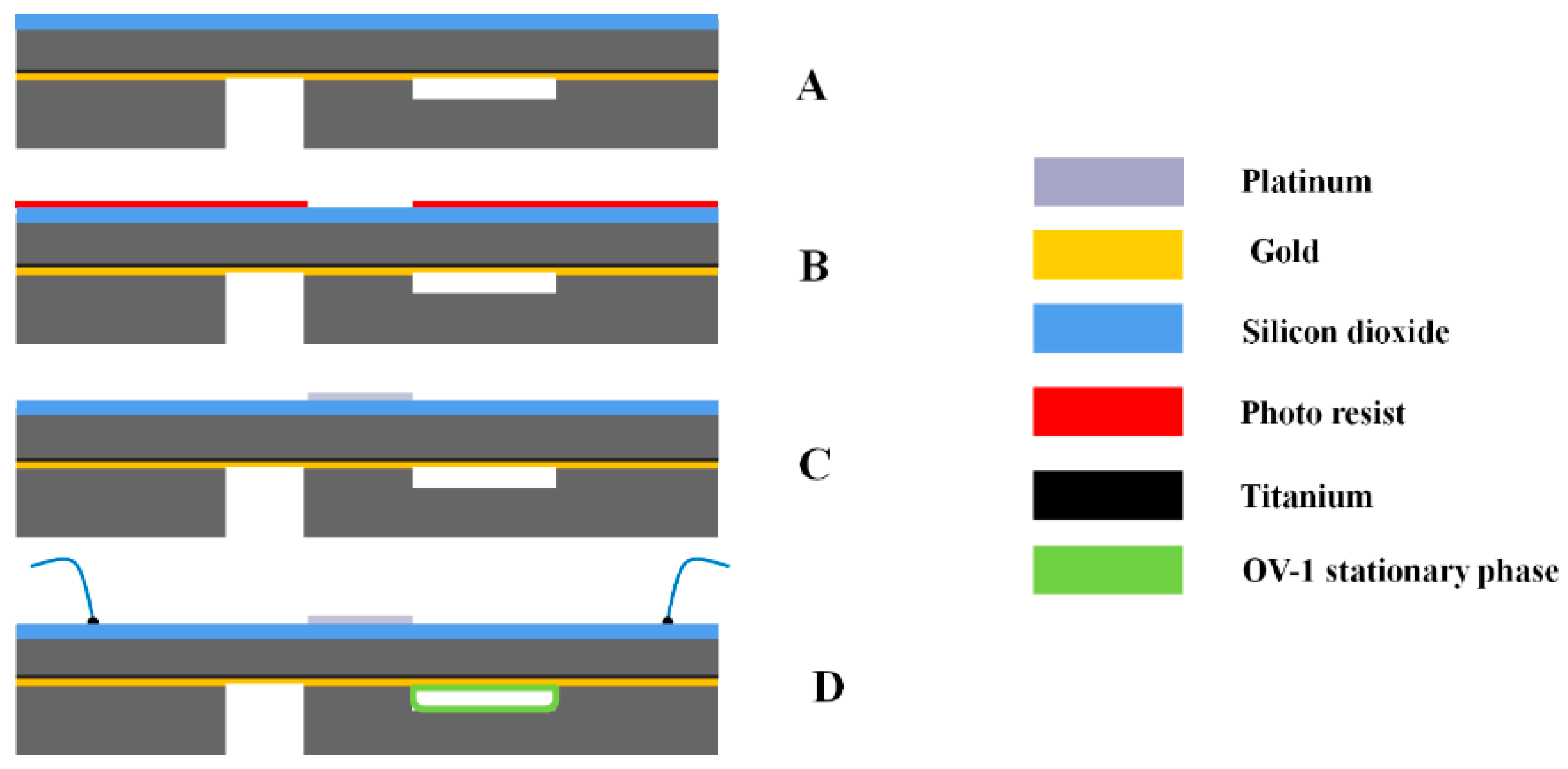
2.2.2. Stage Assembly
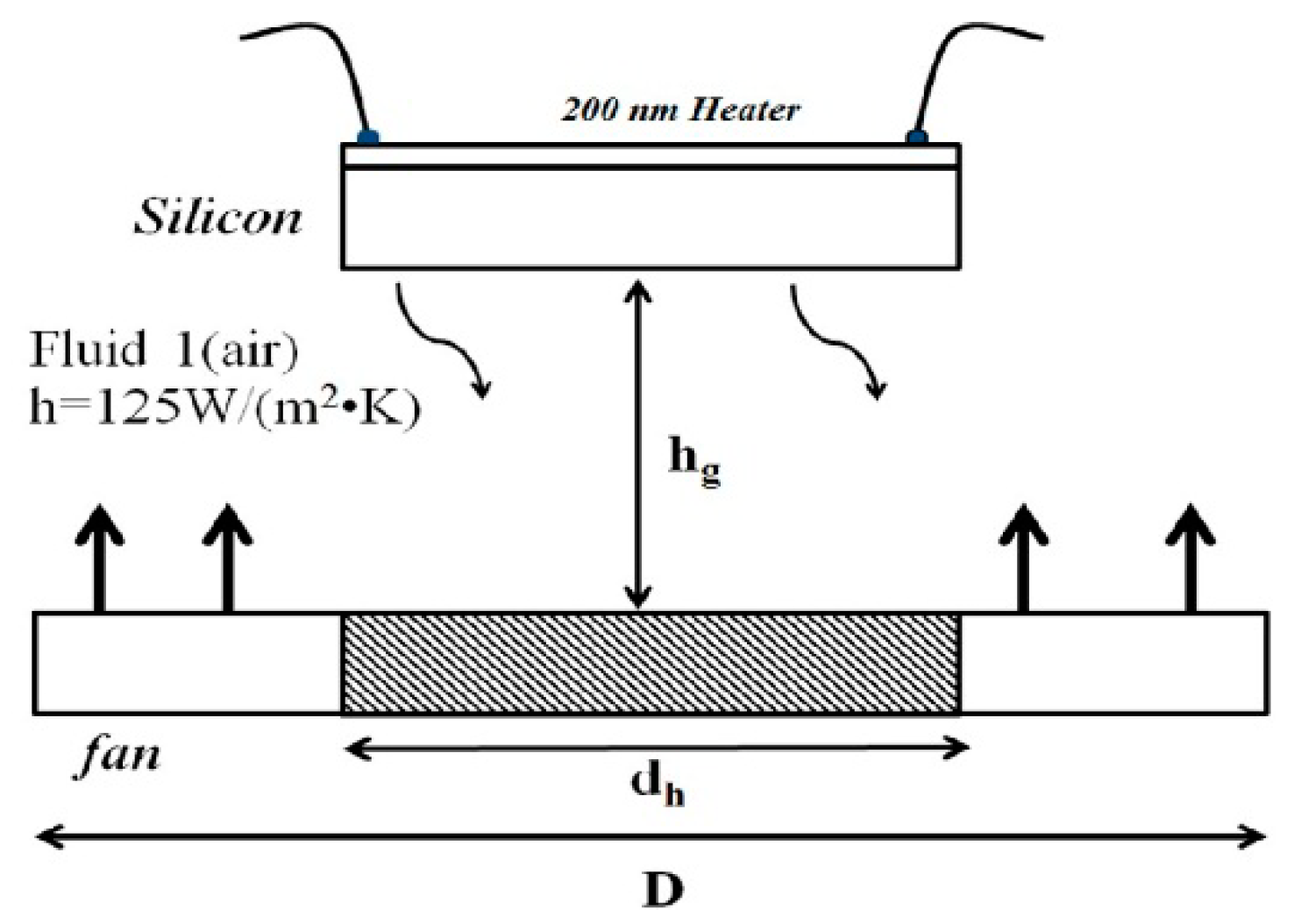
3. Results and Discussions
3.1. Computational Modeling
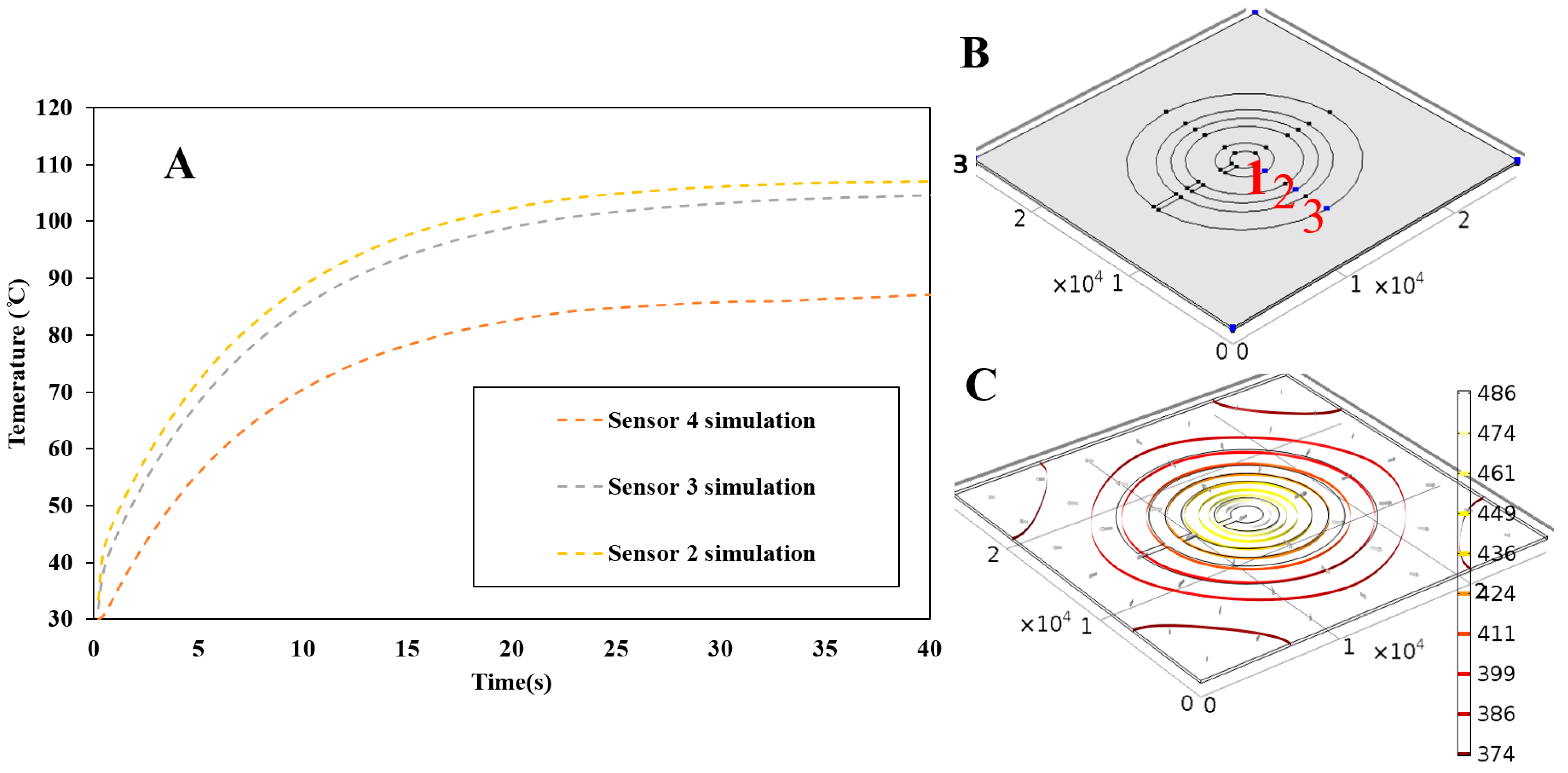
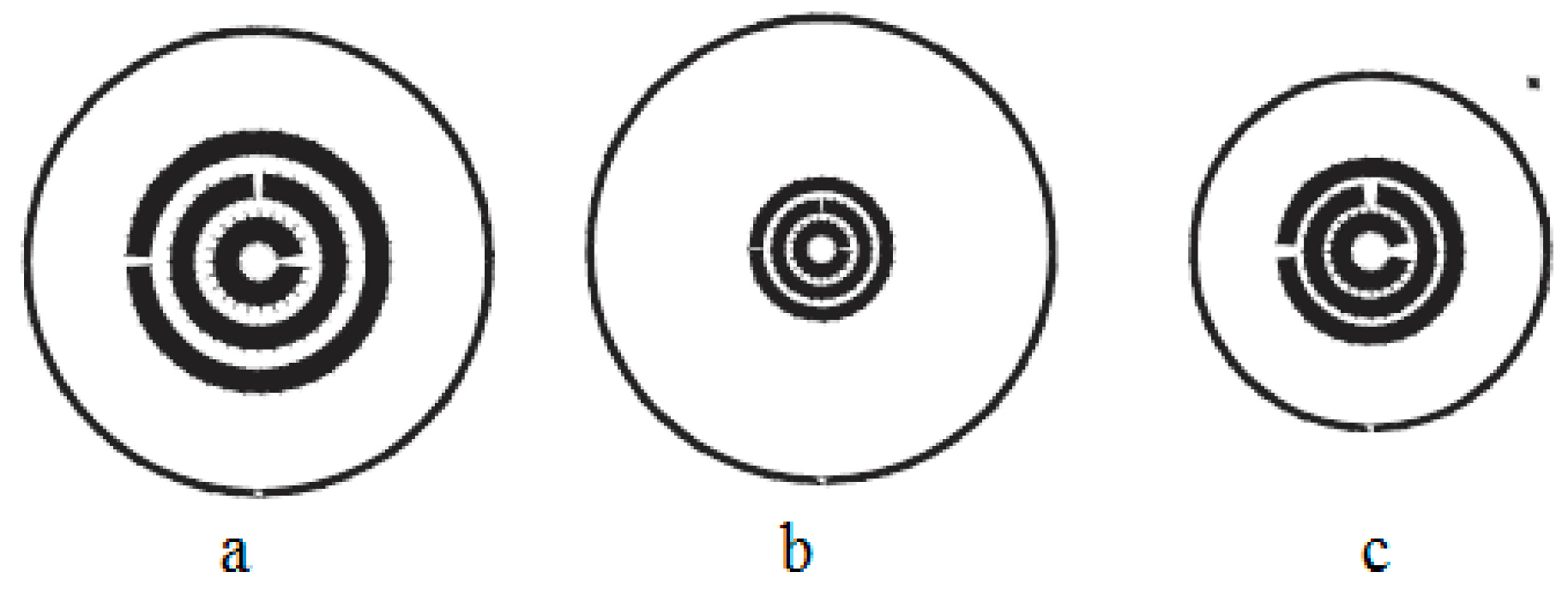
| Design | Radius 1 | Radius 2 | Length (mm) | Track Resistance (Ω) |
|---|---|---|---|---|
| Design a | 0.001 | 0.00175 | 6.28 | 6.97 |
| 0.00225 | 0.003 | 14.14 | 15.68 | |
| 0.0035 | 0.00425 | 21.99 | 24.40 | |
| Design b | 0.00075 | 0.00125 | 4.71 | 7.84 |
| 0.00175 | 0.00225 | 10.99 | 18.30 | |
| 0.00275 | 0.00325 | 17.28 | 28.75 | |
| Design c | 0.001 | 0.002 | 6.28 | 5.22 |
| 0.003 | 0.004 | 18.85 | 15.68 | |
| 0.005 | 0.006 | 31.42 | 26.14 |
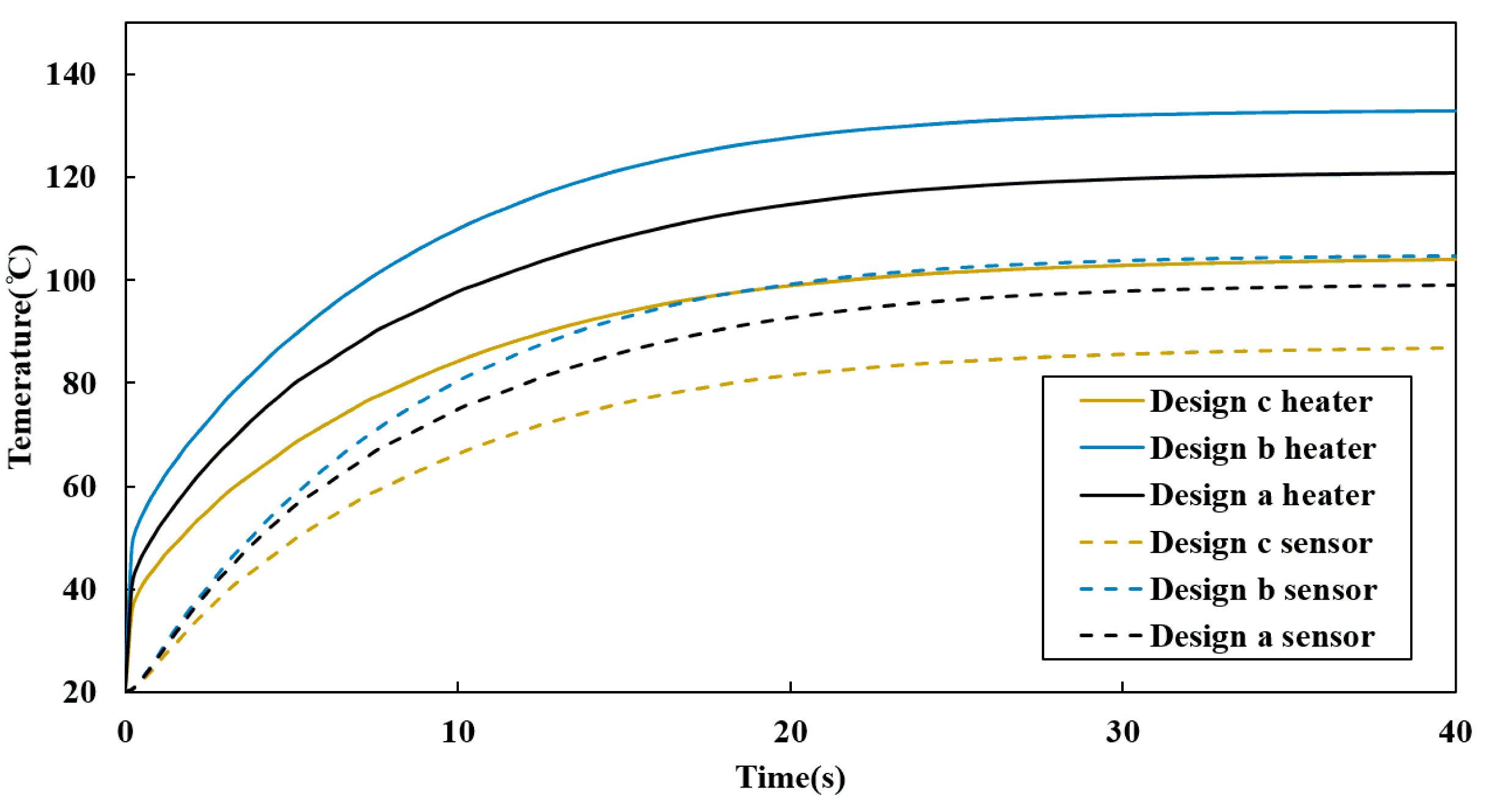
3.2. Heater Characterization
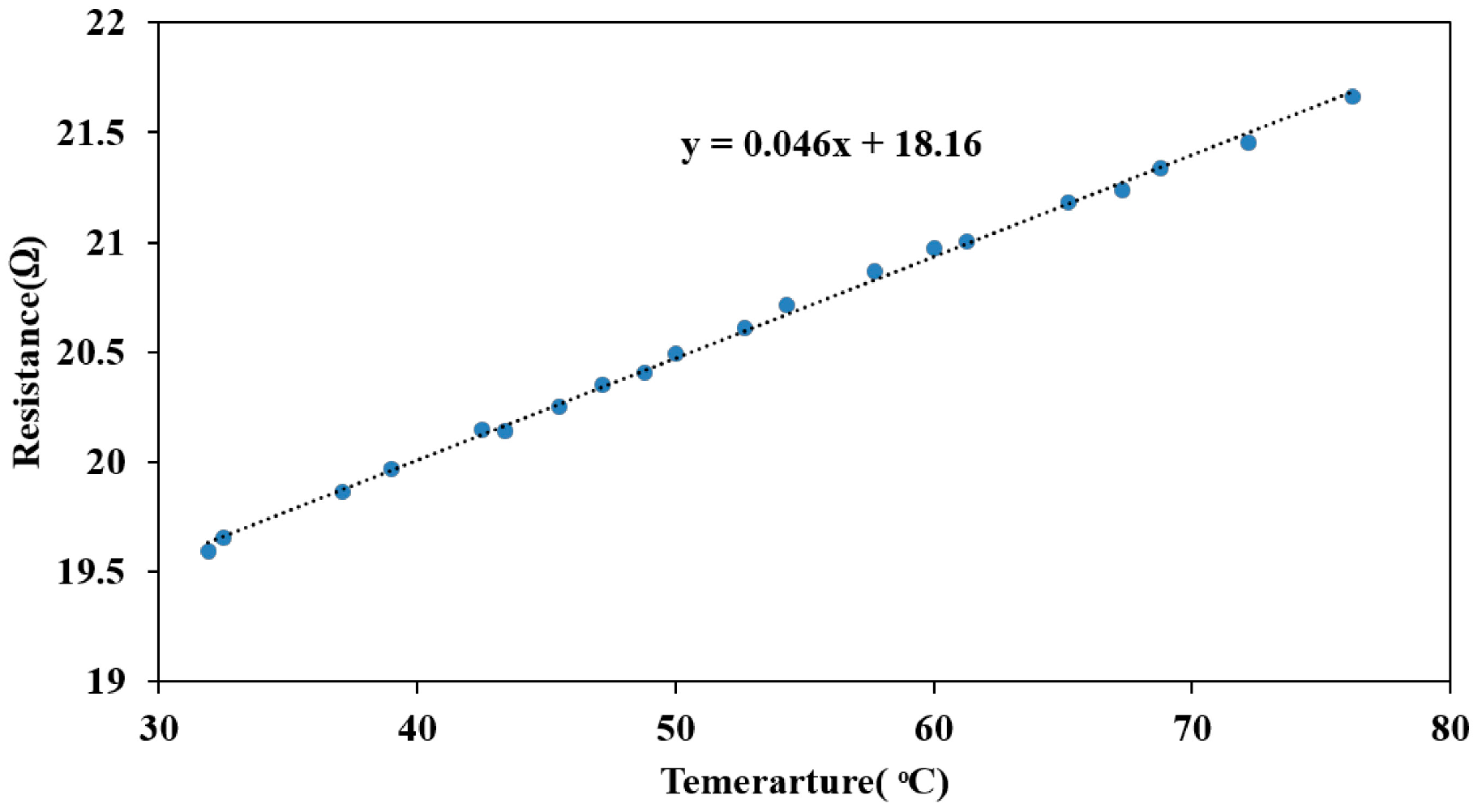
3.3. Coefficient of Convection Characterization
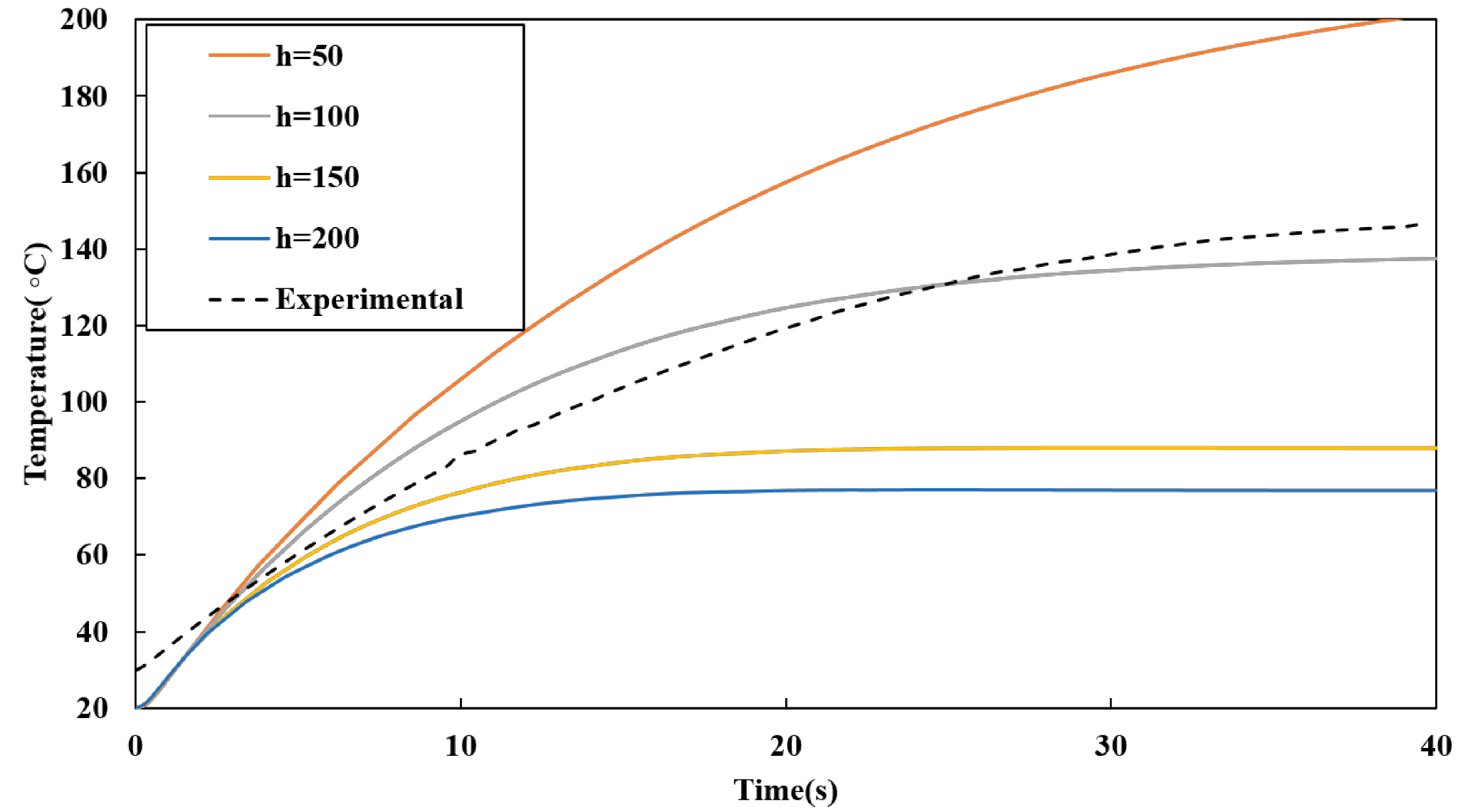
3.4. Experimental Setup
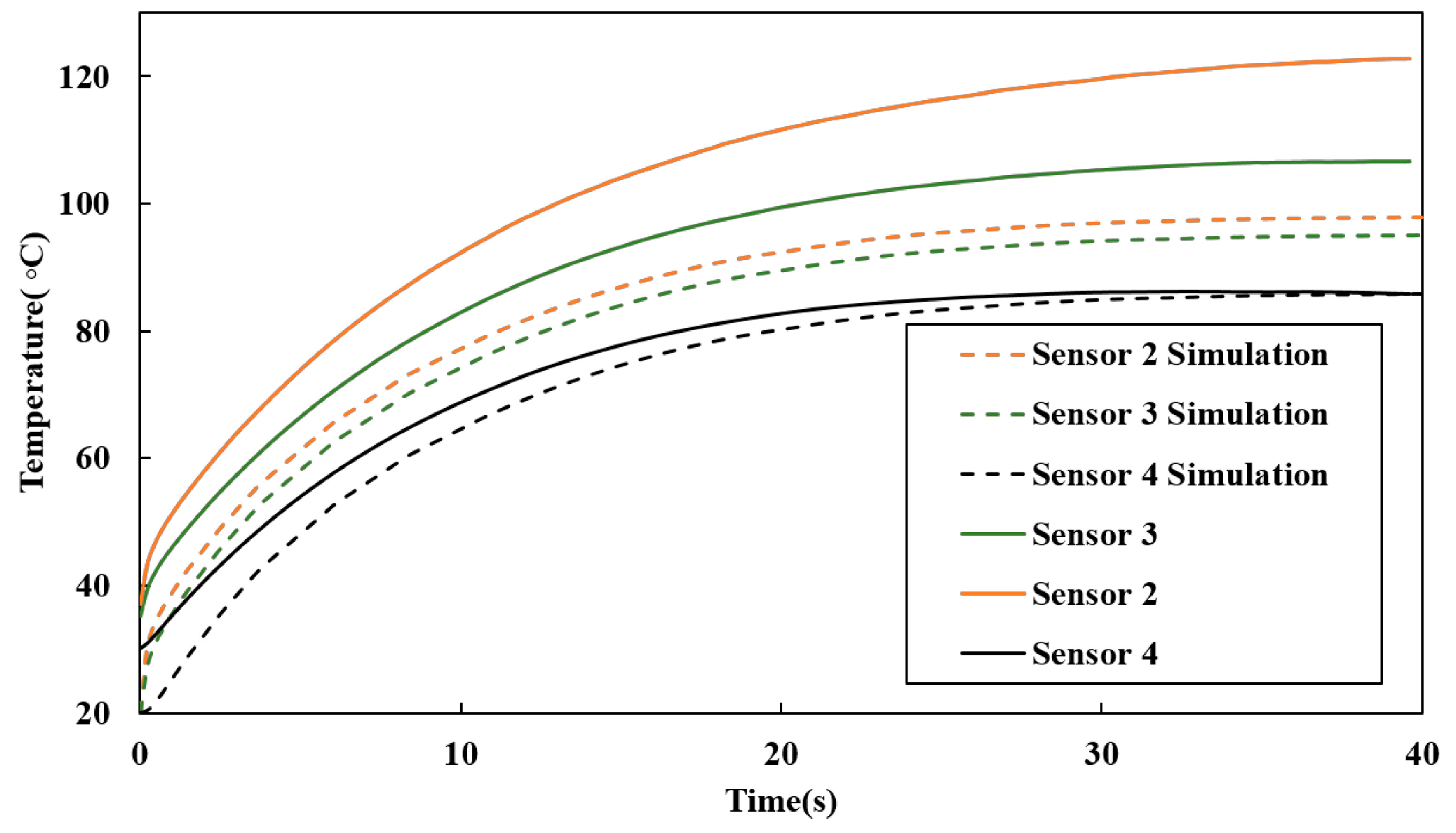
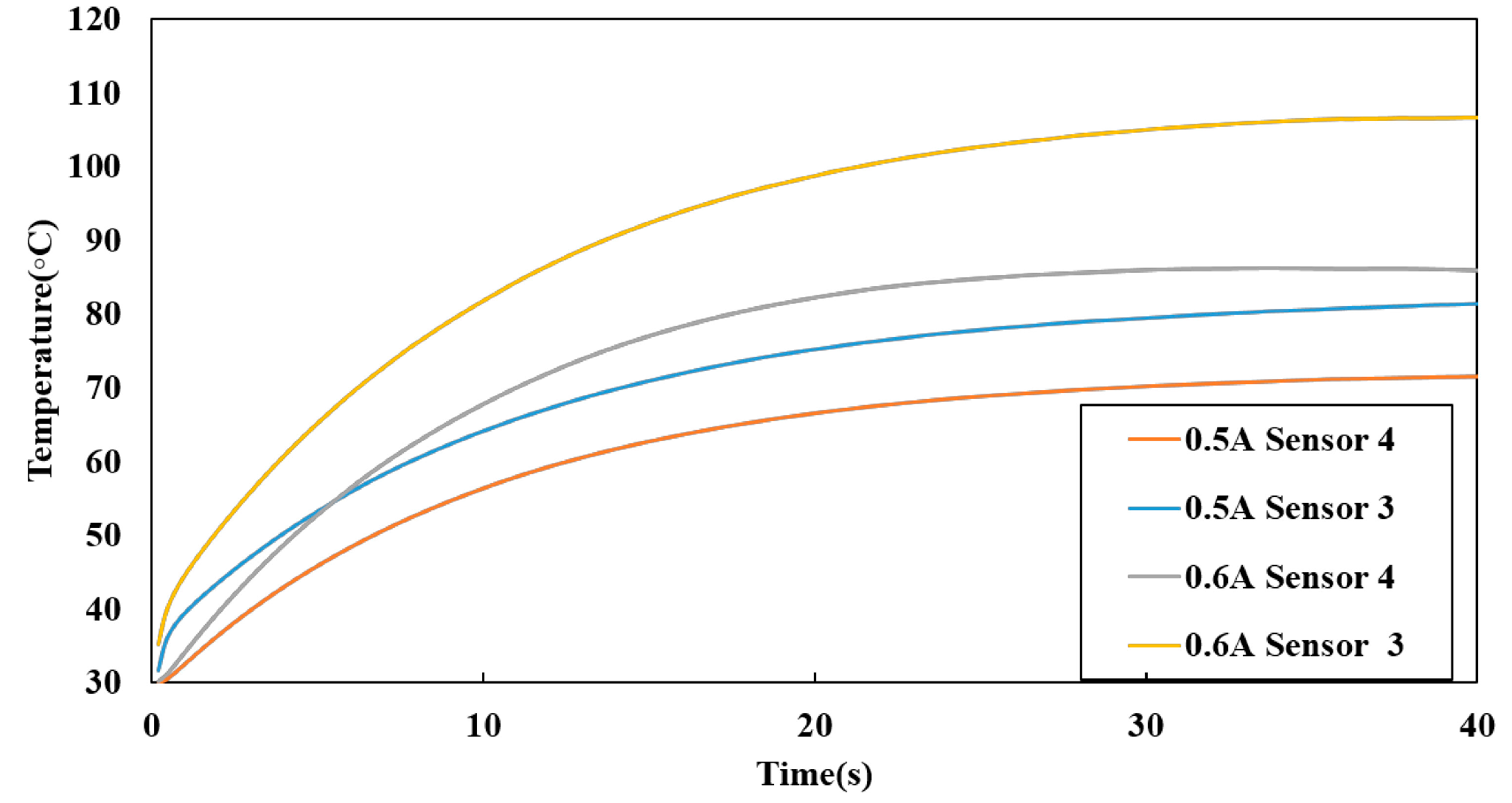
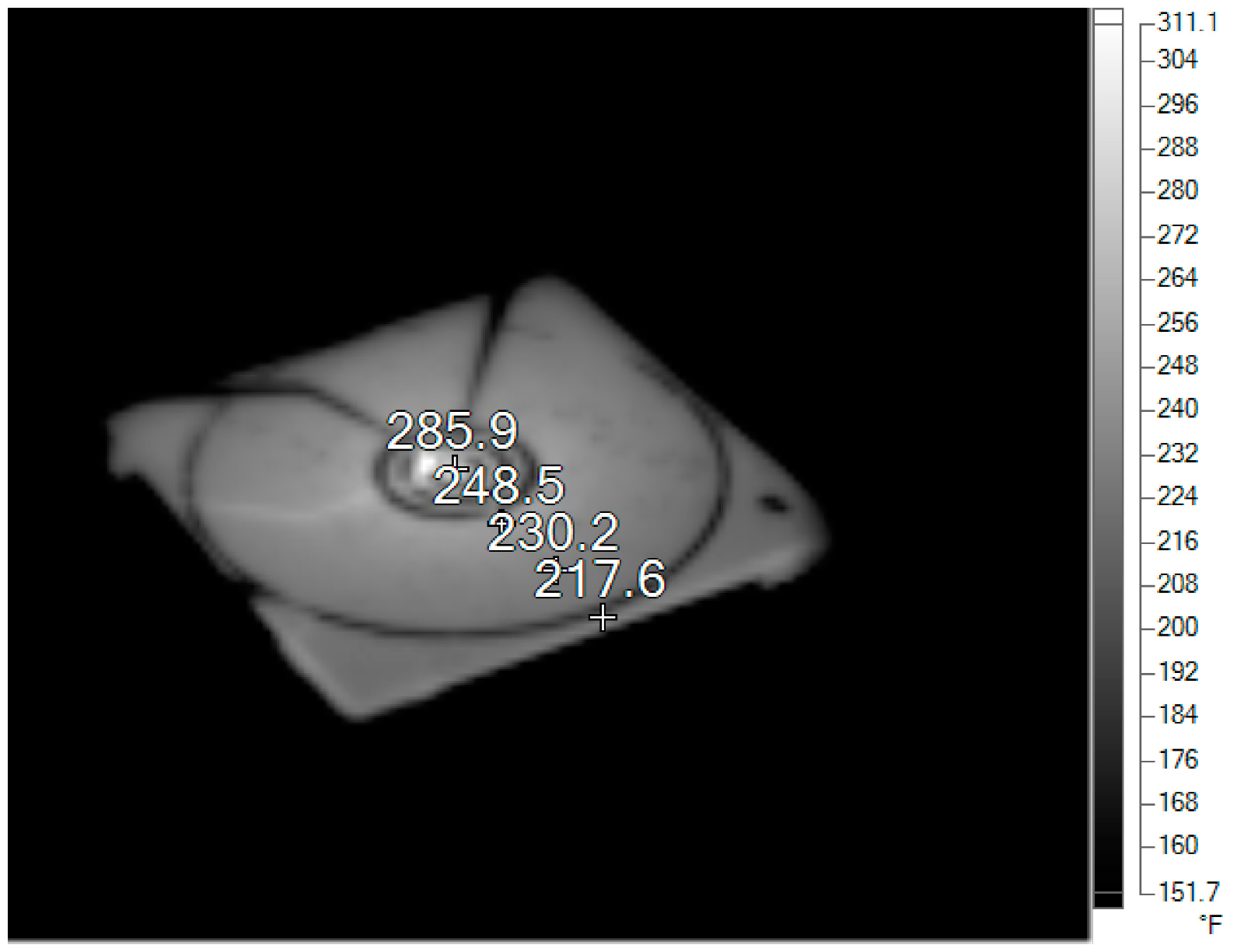
3.5. Column Performance Evaluation
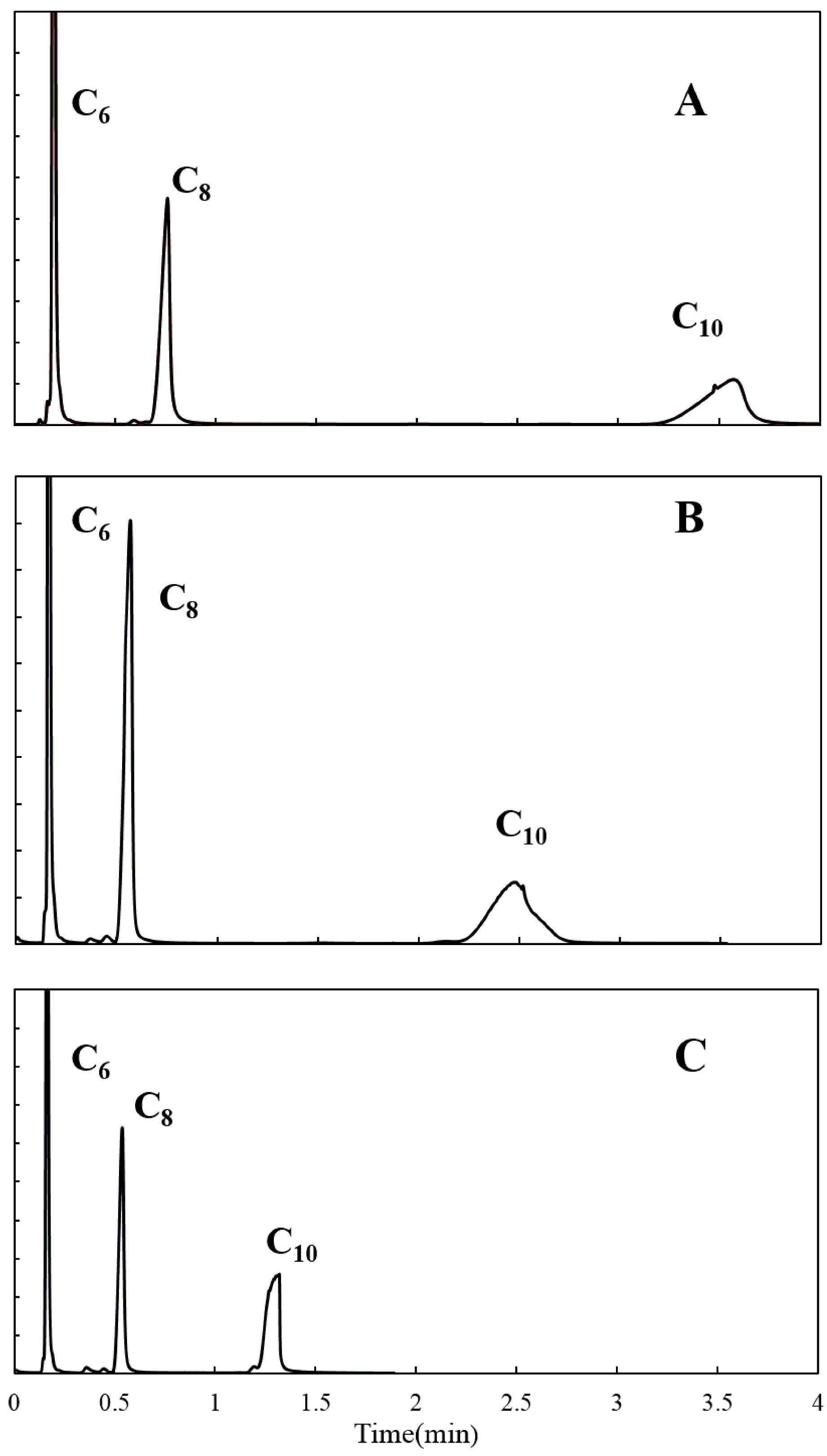
| Peak | TGGC | TPGGC |
|---|---|---|
| C6 | 11.19% | 19.15% |
| C8 | 20.60% | 67.94% |
| C10 | 12.41% | 69.03% |
4. Conclusions/Outlook
Acknowledgments
Author Contributions
Conflicts of Interest
References
- Terry, S.C.; Jerman, J.H.; Angell, J.B. A gas chromatographic air analyzer fabricated on a silicon wafer. IEEE Trans. Electron Devices 1979, 26, 1880–1886. [Google Scholar] [CrossRef]
- Reston, R.R.; Kolesar, E.S. Silicon-micromachined gas chromatography system used to separate and detect ammonia and nitrogen dioxide. I. Design, fabrication, and integration of the gas chromatography system. J. Microelectromech. Syst. 1994, 3, 134–146. [Google Scholar] [CrossRef]
- Lu, C.-J.; Steinecker, W.H.; Tian, W.-C.; Oborny, M.C.; Nichols, J.M.; Agah, M.; Potkay, J.A.; Chan, H.K.L.; Driscoll, J.; Sacks, R.D.; et al. First-generation hybrid MEMS gas chromatograph. Lab Chip 2005, 5, 1123–1131. [Google Scholar] [CrossRef] [PubMed]
- Yamanaka, T.; Matsumoto, R.; Nakamoto, T. Study of recording apple flavor using odor recorder with five components. Sens. Actuators B Chem. 2003, 89, 112–119. [Google Scholar] [CrossRef]
- Albert, K.J.; Walt, D.R.; Gill, D.S.; Pearce, T.C. Optical multibead arrays for simple and complex odor discrimination. Anal. Chem. 2001, 73, 2501–2508. [Google Scholar] [CrossRef] [PubMed]
- Kim, S.K.; Chang, H.; Zellers, E.T. Microfabricated gas chromatograph for the selective determination of trichloroethylene vapor at sub-parts-per-billion concentrations in complex mixtures. Anal. Chem. 2011, 83, 7198–7206. [Google Scholar] [CrossRef] [PubMed]
- Zampolli, S.; Elmi, I.; Mancarella, F.; Betti, P.; Dalcanale, E.; Cardinali, G.C.; Severi, M. Real-time monitoring of sub-ppb concentrations of aromatic volatiles with a MEMS-enabled miniaturized gas-chromatograph. Sens. Actuators B Chem. 2009, 141, 322–328. [Google Scholar] [CrossRef]
- Garg, A.; Akbar, M.; Vejerano, E.; Narayanan, S.; Nazhandali, L.; Marr, L.C.; Agah, M. Zebra G.C: A mini gas chromatography system for trace-level determination of hazardous air pollutants. Sens. Actuators B Chem. 2015, 212, 145–154. [Google Scholar] [CrossRef]
- Zhukhovitskii, A.A.; Zolotareva, O.V.; Sokolov, V.A.; Turkel’taub, N.M. New method of chromatographic analysis. Dokl. Akad. Nauk SSSR 1951, 77, 435–438. [Google Scholar]
- Jain, V.; Phillips, J.B. High-speed gas chromatography using simultaneous temperature gradients in both time and distance along narrow-bore capillary columns. J. Chromatogr. Sci. 1995, 33, 601–605. [Google Scholar] [CrossRef]
- Phillips, J.B.; Jain, V. On-column temperature programming in gas chromatography using temperature gradients along the capillary column. J. Chromatogr. Sci. 1995, 33, 541–550. [Google Scholar] [CrossRef]
- Zhao, H.; Yu, L.; Zhang, J.; Guan, Y. Characteristics of TGPGC on short micro packed capillary column. Anal. Sci. 2002, 18, 93–95. [Google Scholar] [CrossRef] [PubMed]
- Agah, M.; Potkay, J.A.; Lambertus, G.; Sacks, R.; Wise, K.D. High-performance temperature-programmed microfabricated gas chromatography columns. J. Microelectromechan. Syst. 2005, 14, 1039–1050. [Google Scholar] [CrossRef]
- Mahdavifar, A.; Aguilar, R.; Peng, Z.; Hesketh, P.J.; Findlay, M.; Stetter, J.R.; Hunter, G.W. Simulation and fabrication of an ultra-low power miniature microbridge thermal conductivity gas sensor. J. Electrochem. Soc. 2014, 161, B55–B61. [Google Scholar] [CrossRef]
- Mahdavifar, A.; Navaei, M.; Aguilar, R.; Hesketh, P.J.; Hunter, G.; Findlay, M.; Stetter, J.R. Transient Thermal Response of Micro TCD for Identification of Gases. In Proceedings of the 224th ECS Meeting, San Francisco, CA, USA, 27 October–1 November 2013. Abstract 2795.
- Butts, D.A.; Taarea, D. Chapter 19—Electrical properties. In Smithells Metals Reference Book, 8th ed.; Gale, W.F., Totemeier, G.C., Eds.; Butterworth-Heinemann: Oxford, UK, 2004. [Google Scholar]
- Navaei, M.; Xu, J.; Mahdavifar, A.; Dimandja, J.; McMurray, G.; Hesketh, P. Micro-fabrication of all silicon 3-meter GC column using gold eutectic fusion bonding. J. Electrochem. Soc. 2015, in press. [Google Scholar]
- Navaei, M.; Xu, J.; Hesketh, P.; Wallace, R.; McMurray, G. Micro gas chromatography system for detection of volatile organic compounds released by Fungi. In Proceedings of the 224th ECS Meeting, San Francisco, CA, USA, 27 October–1 November 2013.
- Stafford, J.; Walsh, E.; Egan, V.; Grimes, R. Flat plate heat transfer with impinging axial fan flows. Int. J. Heat Mass Transf. 2010, 53, 5629–5638. [Google Scholar] [CrossRef]
© 2015 by the authors; licensee MDPI, Basel, Switzerland. This article is an open access article distributed under the terms and conditions of the Creative Commons Attribution license (http://creativecommons.org/licenses/by/4.0/).
Share and Cite
Navaei, M.; Mahdavifar, A.; Dimandja, J.-M.D.; McMurray, G.; Hesketh, P.J. All Silicon Micro-GC Column Temperature Programming Using Axial Heating. Micromachines 2015, 6, 865-878. https://doi.org/10.3390/mi6070865
Navaei M, Mahdavifar A, Dimandja J-MD, McMurray G, Hesketh PJ. All Silicon Micro-GC Column Temperature Programming Using Axial Heating. Micromachines. 2015; 6(7):865-878. https://doi.org/10.3390/mi6070865
Chicago/Turabian StyleNavaei, Milad, Alireza Mahdavifar, Jean-Marie D. Dimandja, Gary McMurray, and Peter J. Hesketh. 2015. "All Silicon Micro-GC Column Temperature Programming Using Axial Heating" Micromachines 6, no. 7: 865-878. https://doi.org/10.3390/mi6070865






